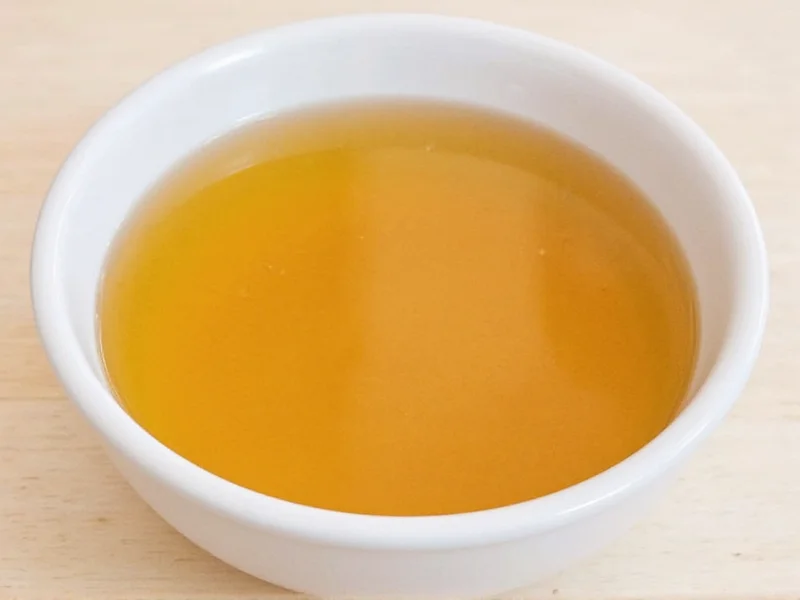Understanding what is the difference between chicken broth and chicken stock is essential for home cooks and culinary enthusiasts. While these terms are often used interchangeably in grocery stores and recipes, professional kitchens treat them as distinct ingredients with specific applications. This confusion stems from inconsistent labeling practices and regional variations in terminology.
Core Differences Between Chicken Broth and Chicken Stock
The fundamental distinction between chicken broth vs stock centers on three factors: primary ingredients, cooking duration, and intended use. Broth focuses on meat for immediate flavor, while stock emphasizes bones for structural properties in cooking.
| Characteristic | Chicken Broth | Chicken Stock |
|---|---|---|
| Primary Ingredients | Meat, vegetables, herbs | Bones (with some meat), vegetables |
| Cooking Time | 1-2 hours | 3-6+ hours |
| Texture | Thin, clear liquid | Thicker, slightly gelatinous when cooled |
| Seasoning | Seasoned (ready to drink) | Unseasoned (base ingredient) |
| Culinary Purpose | Finished soup or sipping broth | Cooking foundation for sauces, soups, stews |
| Flavor Profile | Immediate, pronounced flavor | Subtle, enhances other ingredients |
| Gelatin Content | Low | High (from bone collagen) |
Why the Distinction Matters in Cooking
Knowing the difference between chicken stock and broth affects recipe outcomes significantly. Stock's higher gelatin content provides body to sauces and gravies that broth cannot match. When reduced, stock creates a richer mouthfeel and better emulsification in pan sauces. Broth's ready-to-consume seasoning makes it inappropriate for building complex layered flavors in dishes like risotto or braises.
Chefs often prefer homemade stock for its superior texture and neutral flavor profile. The extended simmering time (minimum 4 hours) extracts maximum collagen from bones, creating that characteristic slight gel when chilled. This gelatin provides the luxurious mouthfeel professional dishes require. Broth's shorter cooking time preserves brighter, more immediate flavors suitable for sipping or quick soups.
Practical Applications and Substitutions
When following recipes, understanding chicken stock vs chicken broth differences prevents culinary mishaps. Use stock as the liquid base for risotto, sauces, and braises where body matters. Choose broth for finished soups, especially when the liquid itself is the star.
Can you substitute one for the other? Yes, with caveats. If substituting broth for stock, reduce it first to concentrate flavors and add body. When using stock in place of broth, remember to season carefully since stock lacks salt. For the best results in professional-quality cooking, maintain separate stocks and broths in your kitchen repertoire.
Addressing Common Misconceptions
Many home cooks wonder is there really a difference between chicken broth and stock. The answer is yes—in professional culinary practice. Grocery store labeling often blurs these lines, with many products labeled “broth” containing bone-derived ingredients. This commercial inconsistency fuels confusion.
Another misconception: “Bone broth is just stock.” While similar, bone broth simmers even longer (12-24 hours) specifically to maximize nutrient extraction, often with added acid to draw out minerals. It occupies a middle ground between traditional stock and a health-focused beverage.
Creating Quality Homemade Versions
For authentic chicken stock vs broth preparation, start with quality ingredients. Stock requires roasted bones (preferably with connective tissue), mirepoix vegetables, and aromatics. Simmer gently—never boil—to avoid cloudiness. Skim impurities during the first hour. Strain through cheesecloth for crystal-clear results.
Broth benefits from fresh meat (chicken breasts or wings), aromatic vegetables, and herbs. Simmer gently for 1-2 hours, then season carefully with salt. For restaurant-quality results, many chefs create a hybrid “bone broth” using both meat and bones for balanced flavor and body.
FAQ Section
Can I use chicken broth instead of stock in gravy?
You can substitute broth for stock in gravy, but the results will differ. Broth lacks the gelatin content that gives gravy its desirable texture. For better results, reduce broth by half first to concentrate flavors and provide more body before making your roux.
Why does my homemade stock gel when cooled but store-bought doesn't?
Homemade stock gels because proper simmering extracts collagen from bones, which converts to gelatin. Many commercial stocks contain additives that prevent gelling or use insufficient bones/meat ratios. The gel indicates high quality—it's the sign of well-made stock with proper collagen extraction.
Does chicken stock have more nutrients than broth?
Stock generally contains more collagen-derived nutrients like glycine and glucosamine due to longer bone simmering. Broth provides more immediate amino acids from meat proteins. Neither is significantly more nutritious overall, but stock offers more joint-supporting compounds from the extended extraction process.
How long does homemade chicken stock last in the refrigerator?
Properly cooled and stored in airtight containers, homemade chicken stock lasts 4-5 days in the refrigerator. For longer storage, freeze in portion-sized containers for up to 6 months. The gelatinous quality should return when properly reheated, indicating successful collagen extraction.
What's the best way to store excess chicken stock?
Freeze stock in ice cube trays for portion control, then transfer cubes to freezer bags. Alternatively, use muffin tins covered with foil. For larger quantities, freeze in 1-cup or 2-cup portions. Properly stored, frozen stock maintains quality for 4-6 months. Always label with date and type (broth or stock).











 浙公网安备
33010002000092号
浙公网安备
33010002000092号 浙B2-20120091-4
浙B2-20120091-4